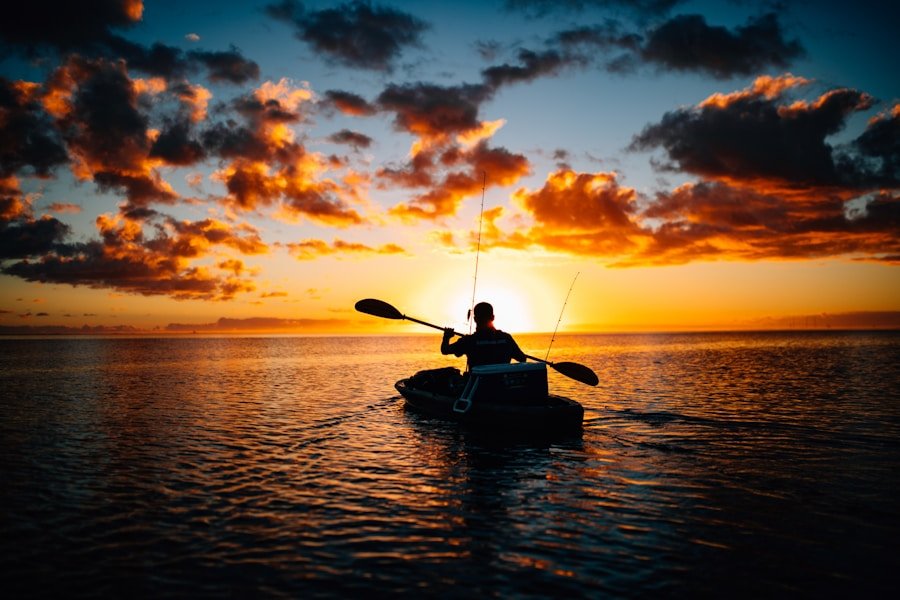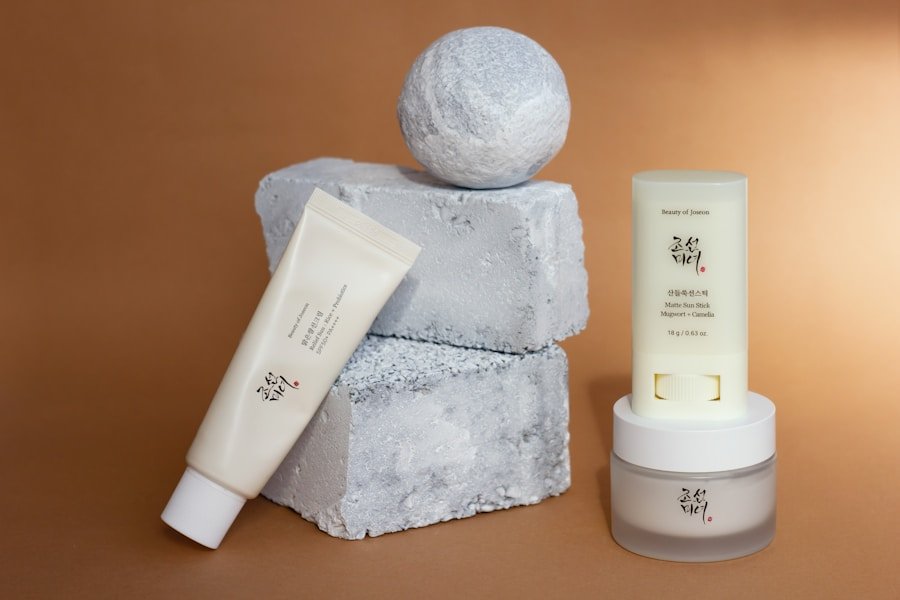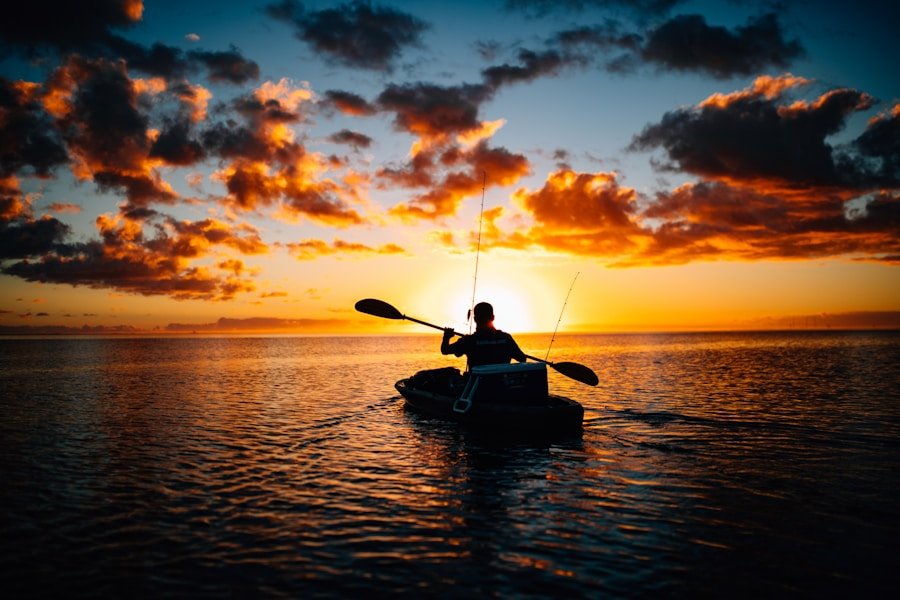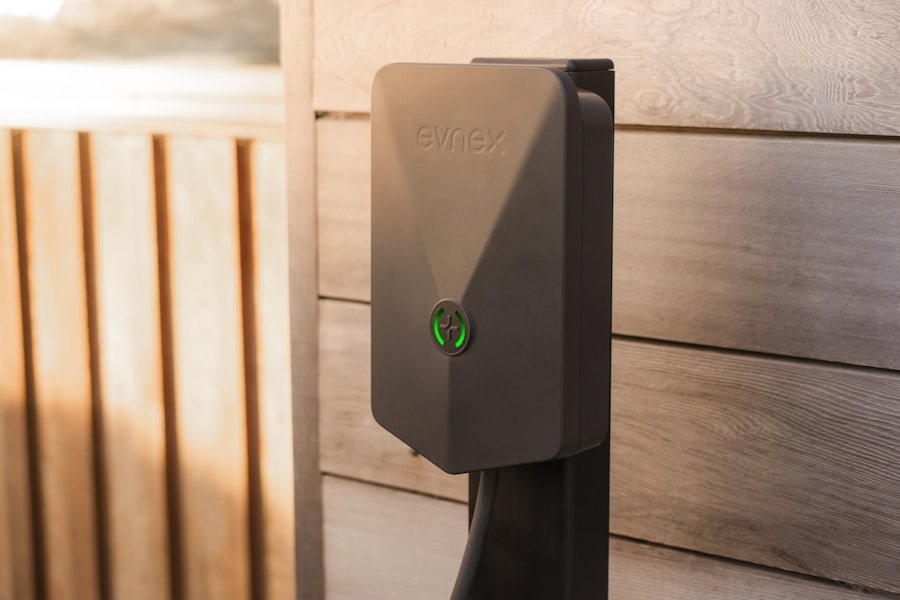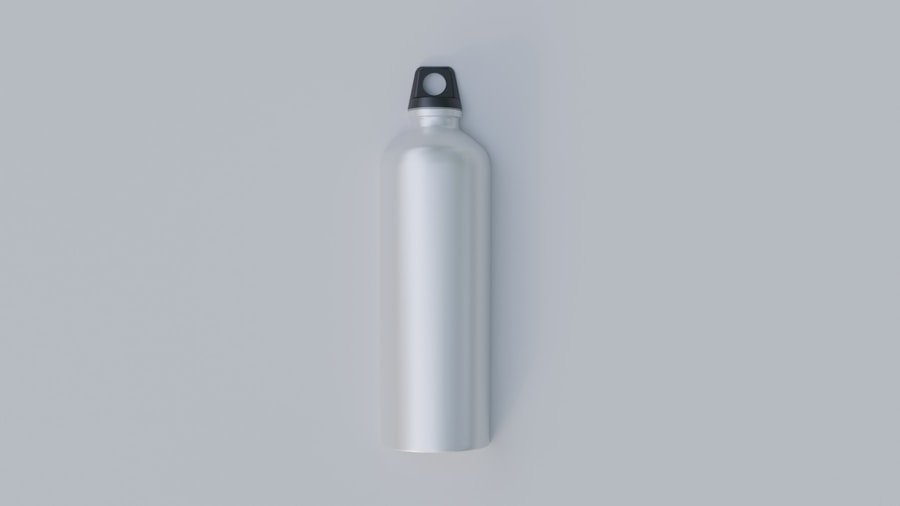Fishing gear is a vital component of any successful fishing trip. Without the appropriate equipment, anglers may encounter difficulties in catching fish or even compromise their safety while on the water. The various components of fishing gear, including rods, reels, and tackle, each play a critical role in the fishing experience.
A thorough understanding of the basics of fishing gear is essential for anglers seeking to enhance their skills and achieve a successful outing. In addition to facilitating the catching of fish, fishing gear also provides a sense of connection to the natural environment. The process of selecting the appropriate gear, casting a line, and reeling in a catch can be a deeply fulfilling experience.
Furthermore, fishing gear enables anglers to engage with their surroundings and gain insight into the habits and behaviors of different fish species. Regardless of whether fishing for recreational or subsistence purposes, possessing the right gear is crucial for a successful and enjoyable experience on the water.
Key Takeaways
- Understanding the Basics: The right fishing gear is essential for a successful outing
- Choosing the Right Rod: Finding the perfect fit for your fishing style is crucial
- Reeling in Success: Selecting the best fishing reel for your needs is important
- Essential Tackle: Must-have gear is necessary for a successful fishing outing
- Gear Maintenance: Keeping your fishing equipment in top condition is key
Choosing the Right Rod: Finding the Perfect Fit for Your Fishing Style
Key Factors to Consider
There are many factors to consider when selecting a fishing rod, including length, action, and power. Longer rods are ideal for casting long distances, while shorter rods offer more precision and control. The action of a rod refers to how much it bends when pressure is applied, with fast action rods bending near the tip and slow action rods bending closer to the handle. Power, on the other hand, refers to the amount of force needed to bend the rod, with heavier power rods being ideal for larger fish.
Fishing Style and Rod Selection
In addition to these factors, anglers should also consider their fishing style when choosing a rod. For example, fly fishing requires a specialized rod designed for casting lightweight flies, while surf fishing may require a longer, more powerful rod to handle larger fish and rough surf conditions.
Finding the Perfect Rod
By taking these factors into account, anglers can find the perfect rod to suit their individual fishing needs and preferences.
Reeling in Success: Selecting the Best Fishing Reel for Your Needs
In addition to a quality rod, a reliable fishing reel is essential for any angler. Fishing reels come in a variety of styles, including spinning reels, baitcasting reels, and spincast reels, each with its own advantages and disadvantages. Spinning reels are popular for their ease of use and versatility, making them a great choice for beginners and experienced anglers alike.
Baitcasting reels, on the other hand, offer greater casting distance and accuracy, making them ideal for targeting larger fish in freshwater or saltwater environments. Spincast reels are often used by novice anglers due to their simplicity and ease of use. When selecting a fishing reel, anglers should also consider the gear ratio, which determines how quickly the line is retrieved with each turn of the handle.
A higher gear ratio means faster line retrieval, while a lower gear ratio provides more power for reeling in larger fish. Additionally, anglers should consider the drag system of the reel, which controls the amount of resistance on the line when a fish is hooked. By choosing a reel with the right gear ratio and drag system, anglers can ensure they have the best equipment for reeling in success on their next fishing outing.
Essential Tackle: Must-Have Gear for a Successful Fishing Outing
| Item | Description | Importance |
|---|---|---|
| Rod | A long, flexible fishing rod used to cast and reel in fish | Essential |
| Reel | A device attached to the rod for winding and stowing the fishing line | Essential |
| Fishing Line | A strong, durable line used to catch and reel in fish | Essential |
| Hook | A curved device used for catching fish by impaling them in the mouth | Essential |
| Bait | Food or lure used to attract fish to the hook | Important |
| Sinkers | Weights used to sink the bait and hook to the desired depth | Important |
In addition to rods and reels, there are several other pieces of tackle that are essential for a successful fishing outing. Hooks, sinkers, and bobbers are all important components of any angler’s tackle box. Hooks come in a variety of sizes and styles, each designed for specific types of bait and fish species.
Sinkers are used to help bait sink to the desired depth, while bobbers are used to keep bait suspended at a specific level in the water. In addition to these basic tackle items, anglers should also consider adding lures, artificial baits, and live bait to their arsenal. Lures come in a wide range of styles and colors, each designed to mimic the movement and appearance of natural prey.
Artificial baits such as plastic worms and grubs are also popular among anglers looking to attract fish with lifelike imitations. Live bait, including worms, minnows, and shrimp, can be highly effective for enticing fish to bite. By stocking up on these essential tackle items, anglers can be prepared for a variety of fishing scenarios and increase their chances of success on the water.
Gear Maintenance: Tips for Keeping Your Fishing Equipment in Top Condition
Proper maintenance of fishing gear is essential for ensuring its longevity and performance on the water. Rods and reels should be cleaned and lubricated regularly to prevent corrosion and ensure smooth operation. Anglers should also inspect their tackle for any signs of wear or damage, replacing hooks or lures as needed.
Storing gear in a dry, cool environment can also help prevent rust and deterioration. In addition to regular maintenance, anglers should also take steps to protect their gear while on the water. Using rod sleeves or cases can help prevent damage during transport, while reel covers can protect against dirt and debris.
Taking these simple steps to care for fishing gear can help ensure that it remains in top condition for many successful outings to come.
Specialized Gear: Exploring Options for Different Types of Fishing
Depending on their preferred style of fishing, anglers may require specialized gear to meet their specific needs. For example, fly fishing requires specialized rods, reels, and lines designed for casting lightweight flies with precision and accuracy. Ice fishing also requires specialized gear, including shorter rods and reels designed to withstand cold temperatures and harsh conditions.
In addition to these specialized types of fishing, there are also niche styles such as kayak fishing, surf fishing, and deep-sea fishing that require unique gear and equipment. Anglers interested in these styles should research and invest in gear specifically designed for their chosen type of fishing to ensure they have everything they need for a successful outing.
The type of fishing environment also plays a significant role in determining the necessary gear for a successful outing. Freshwater fishing requires different equipment than saltwater fishing due to differences in fish species, water conditions, and environmental factors. For example, freshwater anglers may require lighter tackle and smaller lures to target species such as bass, trout, and panfish.
Saltwater anglers, on the other hand, may require heavier tackle and larger lures to target species such as tuna, marlin, and sharks. In addition to tackle differences, anglers should also consider factors such as water depth, current strength, and potential hazards when selecting gear for different environments. For example, saltwater anglers may need to invest in corrosion-resistant rods and reels to withstand exposure to saltwater, while freshwater anglers may need to consider factors such as weed cover and shallow water when selecting tackle.
By understanding these differences and investing in the right gear for their chosen environment, anglers can increase their chances of success on the water. In conclusion, understanding the basics of fishing gear is essential for any angler looking to improve their skills and have a successful outing on the water. From rods to reels to tackle, each piece of gear plays a crucial role in the fishing experience.
By choosing the right gear for their individual needs and preferences, anglers can increase their chances of success and enjoy a rewarding experience on the water. Whether fishing for sport or for sustenance, having the right gear is essential for a successful and enjoyable fishing outing.
FAQs
What are the essential fishing gear items for a successful outing?
The essential fishing gear items for a successful outing include fishing rods, fishing reels, fishing line, hooks, bait, tackle box, and fishing accessories such as pliers, scissors, and a fishing net.
What are the different types of fishing rods available?
There are various types of fishing rods available, including spinning rods, casting rods, fly fishing rods, surf fishing rods, and ice fishing rods. Each type is designed for specific fishing techniques and environments.
What are the different types of fishing reels available?
The different types of fishing reels available include spinning reels, baitcasting reels, spincasting reels, and fly fishing reels. Each type of reel is designed for specific fishing techniques and preferences.
What factors should be considered when choosing fishing gear?
When choosing fishing gear, factors to consider include the type of fish you are targeting, the fishing environment, your fishing technique, and your personal preferences. It’s important to select gear that is suitable for the specific fishing conditions.
What are some important fishing accessories to bring on a fishing trip?
Important fishing accessories to bring on a fishing trip include pliers, scissors, a fishing net, a tackle box, sunscreen, a hat, sunglasses, and a first aid kit. These accessories can help enhance the fishing experience and ensure safety on the water.


